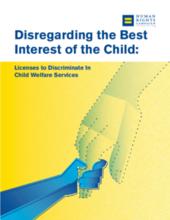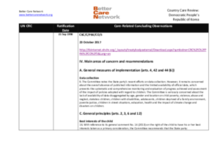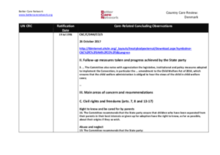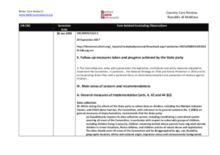Displaying 691 - 700 of 1759
This brief article will outline the path to the provision of an explicit entitlement to aftercare in Ireland.
This brief from the Human Rights Campaign explains why US state laws allowing taxpayer-funded child welfare programs (adoption and foster care services) to discriminate against LGBTQ parents, carers and children is not in the best interests of children.
The objective of this essay is to determine how substitute child care in the Czech Republic has changed in the last ten years.
This systematic literature review examined the application of Continuous Quality Improvement in child protection services.
This article will discuss the impact of reforms on time limits in decision-making for children, questioning whether they achieve both good decisions for children and justice for families.
This country care review includes the care-related Concluding Observations adopted by the Committee on the Rights of the Child as part of its examination of North Korea’s periodic report to the Convention on the Rights of the Child.
This article compares blank care order application templates used in four countries (England, Finland, Norway, and USA (California)), treating them as a vital part of the ‘institutional scripts’ that shape practice, and embody state principles of child protection.
This country care review includes the care related Concluding Observations adopted by the Committee on the Rights of Persons with Disabilities and the Committee on the Right of the Child at their recent examinations of Denmark's report.
This country care review includes the care related Concluding Observations adopted by the Committee on the Rights of Persons with Disabilities and the Committee on the Right of the Child at their recent examinations of the State's report.
The objectives of this study are to: use the methodology of a 2007 study to establish foster care minimum adequate rates for children (MARC) based on the child's age and geographical location in every state; update the MARC with cost of living adjustments to 2016; examine changes in gaps between the MARC and the current foster care rates; and identify states that have made increases to their reimbursement rates, relative to the MARC over time.




